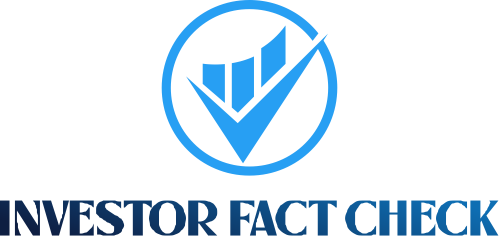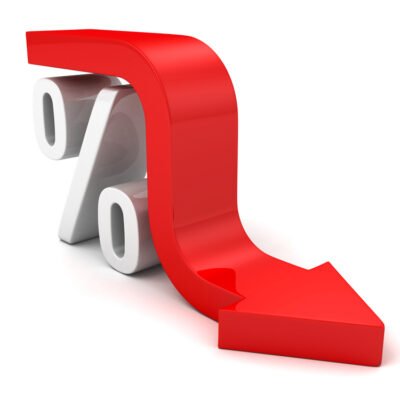Editorial Note: We earn a commission from partner links on Forbes Advisor. Commissions do not affect our editors’ opinions or evaluations.
The rate on a 30-year fixed refinance decreased to 6.23% today, according to the Mortgage Research Center. The average rate on a 15-year mortgage refinance is 5.27%. On a 20-year mortgage refinance, the average rate is 5.93%.
Related: Compare Current Refinance Rates
30-Year Fixed Refinance Intrest Rates Drop 0.73%
The current 30-year, fixed-rate mortgage refinance average rate stands at 6.23%, compared to 6.27% last week.
The annual percentage rate (APR) on a 30-year, fixed-rate mortgage is 6.25%, lower than last week’s 6.3%. The APR is the all-in cost of a home loan—the interest rate including any fees or extra costs.
At the current interest rate, borrowers with a 30-year, fixed-rate mortgage of $100,000 will pay $614 per month for principal and interest, according to the Forbes Advisor mortgage calculator. That doesn’t include taxes and fees. Over the life of the loan, the borrower will pay total interest costs of about $121,752.
20-Year Refi Rates Drop 0.39%
For a 20-year fixed refinance mortgage, the average interest rate is currently 5.93%, compared to 5.96% last week.
The APR, or annual percentage rate, on a 20-year fixed mortgage is 5.97%. It was 5.99% last week.
At today’s interest rate, a 20-year, fixed-rate mortgage refinance of $100,000 would cost $713 per month in principal and interest – not including taxes and fees. That would equal about $71,570 in total interest over the life of the loan.
15-Year Refinance Rates Climb 0.59%
The average interest rate on the 15-year fixed refinance mortgage is 5.27%. Last week, the 15-year fixed-rate mortgage was at 5.23%.
On a 15-year fixed refinance, the annual percentage rate is 5.31%. Last week, it was 5.28%.
At today’s interest rate, a 15-year fixed-rate mortgage would cost approximately $805 per month in principal and interest per $100,000 borrowed. You would pay around $45,295 in total interest over the life of the loan.
30-Year Jumbo Refinance Interest Rates Climb 1.44%
The average interest rate on the 30-year fixed-rate jumbo mortgage refinance (a loan above the federal conforming loan limit of $806,500 in most places) rose week-over-week to 6.7%. A week ago, the average rate was 6.6%.
Borrowers with a 30-year fixed-rate jumbo mortgage refinance with today’s interest rate will pay $645 per month in principal and interest per $100,000 borrowed.
15-Year Jumbo Refinance Rates Climb 0.07%
The average interest rate on the 15-year fixed-rate jumbo mortgage refinance climbed to 5.77%, about the same as last week.
Borrowers with a 15-year fixed-rate jumbo mortgage refinance with today’s interest rate will pay $831 per month in principal and interest per $100,000 borrowed. They will pay about $49,908 in total interest over the life of the loan.
Are Refinance Rates and Mortgage Rates the Same?
Refinance rates are different from mortgage rates and tend to be slightly higher. The rate difference can vary by program and is something to consider as you compare the best mortgage refinance lenders.
In addition to having different refinance rates for conventional, FHA, VA and jumbo applications, cash-out refinance rates are higher as you’re borrowing from your available equity.
Rates for government-backed loan programs such as FHA and VA mortgage refinances can be lower than a conventional or jumbo refinance, as there is less risk for lenders. Still, you should compare your estimated loan’s annual percentage rate (APR), which includes all additional fees and determines the interest charges.
When considering a mortgage refinance, compare your current interest rate, mortgage balance and loan term with the new interest rate and term. This comparison helps you estimate your new monthly payment and savings, making it easier to determine if refinancing is the right choice.
When You Should Refinance Your Home
Refinancing your mortgage can be a wise move for many reasons, most notably lowering your interest rate or your monthly payments. It can also help you pay down your mortgage sooner, access your home’s equity or get rid of private mortgage insurance (PMI).
But there are closing costs associated with refinancing, so it probably makes more sense to refinance if you know you’ll be keeping your home for some time. You can determine the “break-even point” for a potential refinance, or how long it will take for savings from a new mortgage to surpass any closing costs. Find out what those costs will be and divide them by the monthly savings you’ll realize with the new mortgage.
The Forbes Advisor mortgage refinance calculator can help you run the numbers to see if it’s a good time for you to refinance.
How To Get Today’s Best Refinance Rates
Just like when you took out your original mortgage, it pays to have a strategy for finding the lowest rate when you want to refinance. Here’s what you should be doing to get a good mortgage rate:
- Improve your credit
- Consider a shorter loan term
- Lower your debt-to-income ratio
- Watch mortgage rates
There are no guarantees when it comes to borrowing, but a strong credit score is one of the best things you can do to present yourself to lenders. Banks and other mortgage refinance lenders are more likely to approve you if you don’t have too much debt relative to your income. You should check in on mortgage rates, which fluctuate frequently, on a regular basis. And use calculators like ours to see if you can swing a home loan that’s shorter in duration than the popular 30-year mortgage. These loans usually have lower interest rates.
Best Mortgage Refinance Lenders of 2025
Find the best Mortgage Refinance Lenders for your needs.
Mortgage Refinance Rate Trends for 2025
National average mortgage interest rates will have the most significant impact on refinancing trends throughout 2025, whether they rise or fall.
While predicting mortgage interest rates is challenging, experts expect them to remain in the mid-to-high 6% range through the rest of 2025, with a chance that they fall further in 2026 if the Federal Reserve continues to cut its federal funds rate.
Since experts anticipate rates remaining steady through the end of the year, homeowners waiting to refinance at a lower rate may want to hold off a while longer to secure the best rate. In the meantime, improving your credit score, making on-time payments and paying down your loan amount will put you in the best position to secure a low rate when you begin shopping for a refinance offer.
Frequently Asked Questions (FAQs)
How do you find the best refinancing lender?
Our guide to the best mortgage refinance lenders is a good starting point, but make sure you compare multiple lenders and get more than one quote. It’s always a good idea to find out the closing costs lenders charge, and also to make sure you can communicate easily with your lender. Conditions in the housing market change frequently, so being able to depend on your lender is crucial.
How much does it cost to refinance a mortgage?
Closing costs for a refinance can be anywhere from 2% to 6% of the cost of the loan. It’s always a good idea to ask the lender what kind of closing costs they’ll charge before you decide to borrow from them.
How quickly can you refinance a mortgage?
You can usually refinance a mortgage in as quickly as 45 to 60 days, but it depends on many factors – like the type of home loan you choose. Always check with your lender before committing to borrow.





